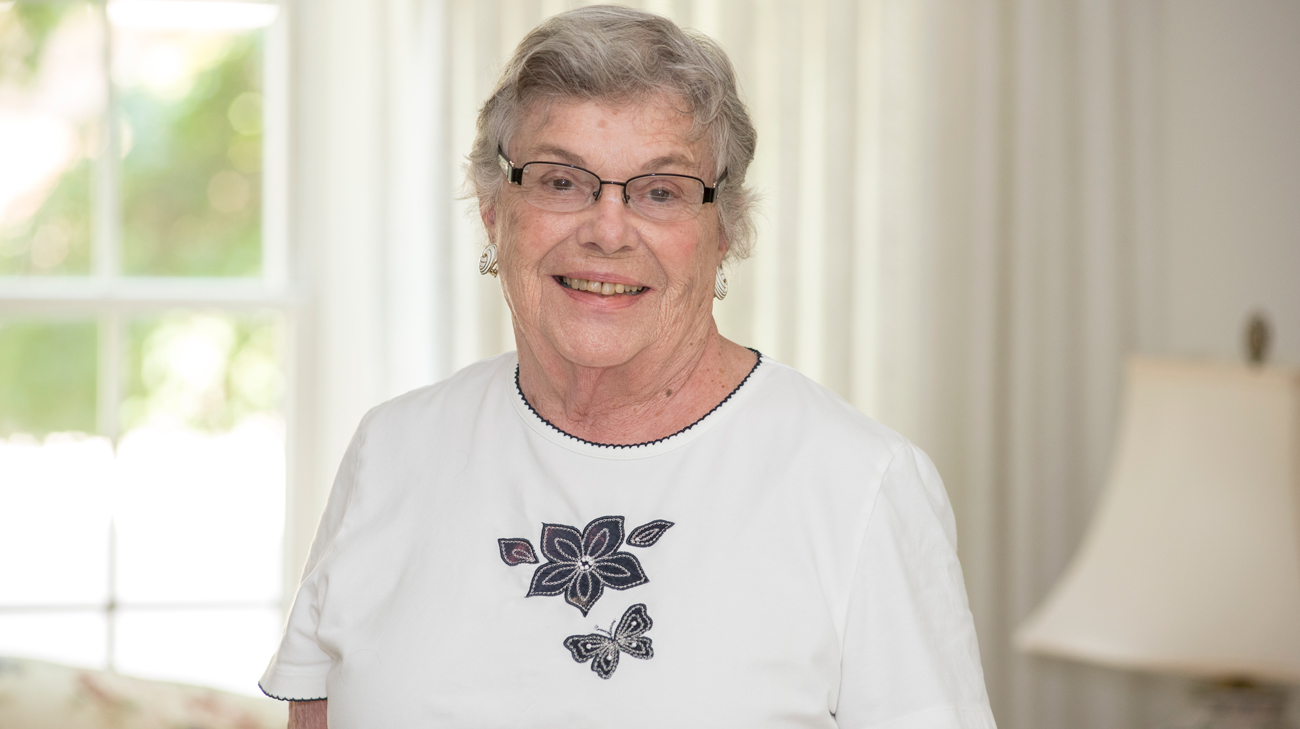
Anne Mayer is forever thankful for the interventional stroke team just 10 minutes from her Rocky River home. On April 1, the 86-year-old was rushed to Cleveland Clinic Neurological Institute at Fairview Hospital.
“Anne’s story is a reminder for all of us to immediately heed the warning signs of a stroke,” says Jayashree Sundararajan, MD, her vascular neurologist at Cleveland Clinic Fairview Hospital.
Mrs. Mayer awoke from bed with a severe headache in the right temple area. She got up to get Tylenol and fell on the floor. Her husband, Richard, helped her into a chair.
“He knew I didn’t look right,” Mrs. Mayer says. He immediately noticed the classic stroke symptoms — facial droop, vision problems and gazing. Rushed by Rocky River EMS to the Fairview Hospital Emergency Department, a Joint Commission certified Primary Stroke Center, she was immediately assessed.
“Anne had vision loss in one eye and had difficulty communicating,” says Dr. Sundararajan. All indications led the cerebrovascular team to believe that Mrs. Mayer had a blockage to the vessel going to the right side of the brain. She was diagnosed as having had a moderate stroke, or a 7 on the NIH Stroke Scale.
Since the onset of her symptoms was unclear, Mrs. Mayer was not a candidate for clot-busting drugs. However, she was a candidate for an interventional procedure.
In the past, patients like Mrs. Mayer would have to be transferred by critical care transport to the interventional stroke team on Cleveland Clinic’s main campus. Now, as she was undergoing an MRI, on-call interventional stroke specialists from Cleveland Clinic Cerebrovascular Center were on their way to Fairview Hospital.
“I feel great and people tell me I look wonderful. Everyone who took care of me was fabulous, kind and professional.”
The MRI indicated that a blockage in the right middle cerebral artery had not yet caused serious brain damage. “But it was just a matter of time,” says Dr. Sundararajan. “The MRI showed the potential for Anne’s recovery, if the blockage could be resolved soon.”
With acute stroke, the sooner intervention begins, the greater the probability of limiting or reversing brain damage.
Within two hours of her arrival, the interventional stroke team — which included neurologist Shazam Hussain, MD, Head of Cleveland Clinic’s Stroke Program — cleared the blockage by directing a clot-retrieving catheter through the groin to the carotid artery.
The 35-minute procedure completely restored the blood supply to her brain. “She had the best outcome possible,” says Dr. Sundararajan.
Mrs. Mayer went into the intensive care unit for overnight monitoring before being transferred to a dedicated stroke unit at Fairview Hospital. She later was transferred to Cleveland Clinic Rehabilitation Hospital in Avon, where she received physical and occupational therapy.
Dr. Sundararajan credits the entire stroke recovery team — from admission through discharge — for the positive outcome. “The recovery team is just as important as the intervention team,” she says.
In a follow-up appointment, Mrs. Mayer showed some minor weakness in her arm and leg, but scored “0” on the stroke scale.
“I feel great and people tell me I look wonderful,” she says. “Everyone who took care of me was fabulous, kind and professional.”
Related Institutes: Neurological InstitutePatient Stories
Perseverance and Focus Help Ovarian Cancer Survivor Beat the Odds HIPEC During Surgery Helps Keep Disease Under Control
Dec 10, 2025
Boy With Advanced Liver Cancer Thriving After Lifesaving Living Organ Donation From Aunt
Dec 8, 2025
Against All Odds A Journey of Recovery After Stroke
Dec 5, 2025
“Dr. Pervez is absolutely incredible, I can’t say enough about him and the speech therapy department. And Cleveland Clinic is phenomenal. They’ve always been wonderful, and I recommend them to everyone I talk to.”


